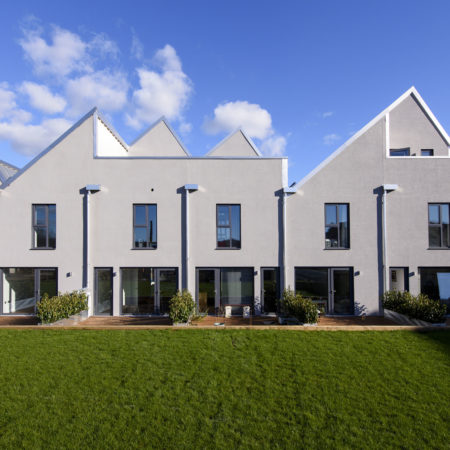Housebuilding Has Plenty of Challenges. Fortunately, We’re Focused on Finding Solutions
Documenting all of the challenges faced by the UK homebuilding sector would create a very long list. The main ones are the need to increase productivity, up quality levels and helping to meet zero carbon and sustainability goals.
The above factors apply to all projects. At the individual project level other requirements come into play. These can include considerate construction, efficient land utilisation, planning controls and affordability. There is also a trend towards multigenerational living that calls for different designs of homes.
Flexibility and creativity are the orders of the day. The environment that housebuilders find themselves in has initiated an era of innovation. For many of us there was a realisation that sticking with familiar methods couldn’t deliver what was needed.
Recent projects delivered by Osborne feature a range of approaches that point the way for an industry that has to produce new homes at an unprecedented speed while also improving quality and energy efficiency.
Flexible, Multigenerational Housing
Offsite solutions are increasingly used because they offer designers more flexibility while reducing costs and shortening project schedules. Working with systemised housing specialists Innovaré we have developed a highly flexible housing product that can easily be adapted to suit social rent, affordable, mixed tenure and multigenerational housing.
Structural Insulated Panels (SIPs) and bathroom pods are central to a system that offers practical and sustainable solutions to complex housing needs.
Time and Cost Saving
Innovative approaches to construction were deployed to deliver 39 affordable homes and 19 for private sale along with a new community centre, retail units and multi-level car park at the Redbrick Estate in Islington. Deploying different methods and materials saved over £1.1m from the budget and 36 weeks from the programme.
Changes included switching to offsite precast balconies, altering the inner leaf external walls from blockwork to Metsec infill, and using SIPs for the community centre structure in place of a reinforced concrete frame. This change allowed the existing foundations and basement to be retained.
The location for the project was also sensitive. The neighbours included the London Symphony Orchestra so keeping noise and disturbance to an absolute minimum was essential.
Community Engagement
On schemes like these community engagement is essential. On both the Redbrick Estate and the Parsons North project for Westminster City Council, we engaged Newman Francis to ensure that the local community was fully informed and engaged.
Parsons North involved building 60 new sustainable homes with basement parking and retail units fronting London’s Edgeware Road. The scheme was delivered in a highly sensitive manner to consider the needs of residents in the next door tower block and the traffic-sensitive location.
Real time noise monitoring with a ‘traffic light’ system was installed. Acoustic screens were erected and quiet ‘munchers’ were used to break concrete. High-pressure water dampened the dust to keep nuisance to a minimum. A local skills and employment support programme was also launched in collaboration with the council.
Fabric-First
The technical and commercial challenges of modern housebuilding call for a fabric-first approach. In practice this means collaborating from an early stage with architects and designers to specify materials and methods that have the required inherent levels of thermal insulation and other desired properties.
The most cost-efficient way to ensure that sustainability standards can be met is by engineering the structure rather than retro-fitting additional insulation or renewable energy sources. At Wardells Grove in Lewisham, for example, we created 124 affordable units meeting CfSH Level 4 using SIPs.
Zero carbon construction is much more attainable when appropriate methods and materials are selected at the start of the project.
Although the list of requirements for homebuilding projects may look daunting and ever increasing, our response at Osborne is based on finding solutions. The case studies we link to above demonstrate how we tackle challenges.

